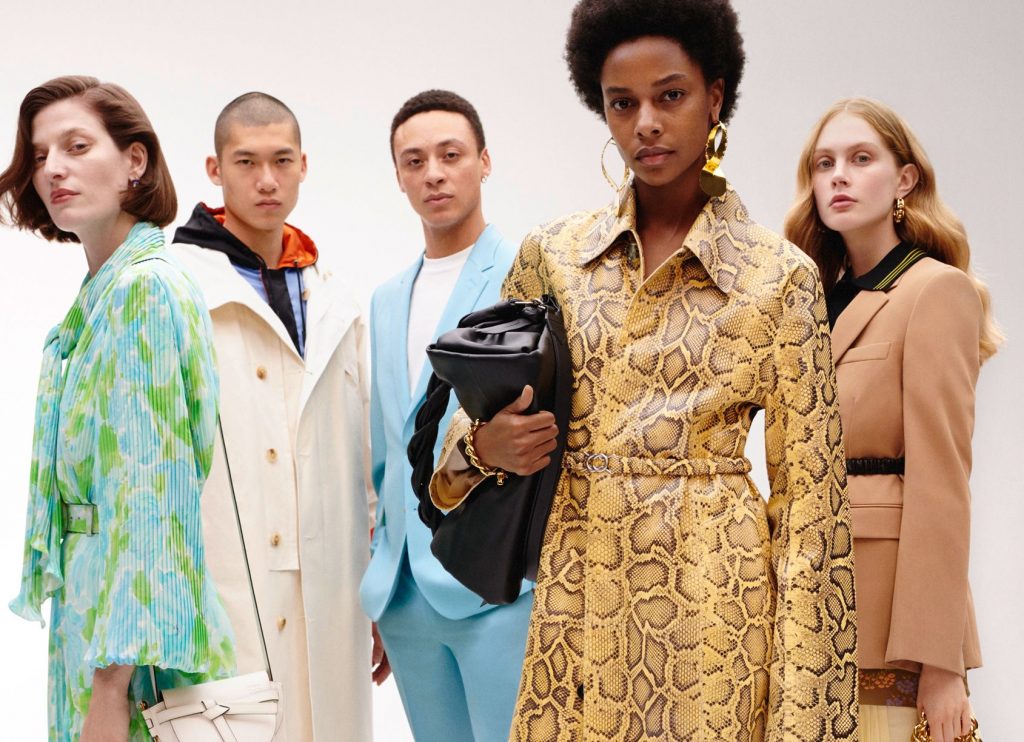On the heels of publishing a “business update” this week, in which it revealed that its sales figures are up for the quarter to date through May 31, 2021, including a 106 percent year-over-year jump in gross merchandise volume to approximately $239 million, The RealReal’s chief executive Julie Wainwright and CFO Matt Gustke shed light on the state of the TRR business, and larger industry trends during Piper Sandler’s Consumer Marketplace Conference on Thursday, including the ongoing post-pandemic increase in sales of apparel, and the rise in resale-related deals and endeavors from existing market players, which Wainwright says actually bode well for her 10-year-old company and the circularity movement as a whole.
Speaking to what Piper Sandler managing director Erinn Murphy described as the “record level” average order values (“AOV”) that TRR has seen in the quarter so far, with the average orders amounting to approximately $520, an increase of 26 percent year-over-year and 13 percent compared to the same period in 2019, Wainwright stated that fine jewelry, watches, and handbags continue to drive these high AOV numbers. The trend that TRR saw during COVID of consumers investing in higher-value items – presumably with funds that may have otherwise been spent on travel, dining out, etc. – “has not slacked off.” On the apparel front, she revealed that demand is coming back following an industry-wide slump in 2020 and early 2021, with clothing sales now “slightly higher” than pre-COVID. Gustke stated that the increase in interest in apparel among consumers is not only contributing to climbing AOVs, but is resulting in an increase in units per transaction, which are “getting closer to what they were pre-COVID.”

Overall demand for the company – from hard luxury and handbags to Spring/Summer apparel – has been boosted by an increase in supply, Wainwright said, echoing statements from Q1 about how supply is the “lifeblood” of TRR’s business (and its path to profitability), and the primary driver of demand. In what could prove to boost apparel sales for retailers across the board, she revealed that based on existing consignment trends, consumers appear to be overhauling their wardrobes, and making room for new stuff.
For example, she stated that before COVID, “We would get between 15 and 17 units [to consign] per home pick up. Now, when we are going into consignors’ homes,” a service that TRR resumed in mid-May, “we are getting between 28 and 30 units per pickup.” Wainwright revealed that she thinks “this will be short-term, but it makes sense because people are revisioning their wardrobes” and in many cases, have not consigned since the outset of the pandemic.
In terms of consignment and sales activity in key markets, Wainwright said that California and Texas are “ahead of the curve,” and that New York is “not far behind.” She also stated that TRR has seen a “bit of a geo shift” outside of New York City and Los Angeles – which accounted for about 40 percent of TRR’s supply units pre-pandemic – with “people in Connecticut, New Jersey, and even Long Island being a little bit more active than people in Manhattan,” which could reflect an enduring exodus from cities across the U.S.
She noted that supply in Los Angeles is back to where it was pre-COVID, and while New York is “not there yet,” she thinks that as New Yorkers return to the city, that will change.
Asked about the recent events in the resale market, including Etsy’s acquisition of Depop, eBay’s announcement that it will authenticate certain luxury handbags on its marketplace, and Rent the Runway’s impending move into the resale space, Wainwright said that there is little overlap between its consignors and buyers and those that buy/sell on eBay, for example. Clients of TRR are looking for a “full-service experience” and are “not looking to haggle over prices, and they trust us.” With that in mind, she said that “the moat around our business, and our buyer and consignor base is pretty darn safe.” Having said that, she asserted that “the move people that think authentication is important, the better off the whole industry is.”
And beyond that, Wainwright said that “the more people that think about consigning and that think about buying resale is really good for us,” especially since as recently as two years ago, half of TRR’s consignors had “never consigned before because it had never occurred to them.” So, generating awareness about the resale model and that consigning is “a good thing to do and a normal thing to do,” stands to enable TRR to benefit immensely.











